#stelladilemmen
Text
Sciacchetrà
In the vineyard we selected the most suitable bunches, those with the most sparse berries, of the Bosco, above all, and Vermentino varieties, which will create our #Sciacchetrà. 🥂
To choose the harvest period we were very careful about the acidity of the grapes, which will balance their increasing sweetness during dehydration. 🍇
We then spread the clusters on the trellises, this year also hanging them from chains.
We let the wind and sun work on the grapes for almost two months. In addition to the dehydration process, endogenous enzymatic processes in the grapes themselves contributed to their complexity. 🌞 💨
On the first days of November, the grapes were taken off the trellises and de-stemmed by hand. 🖐
#sciacchetra#italianwine#farm#wine#biodynamicfarming#biodynamicwine#biologico#farming#biodinamica#cinqueterre#grapes#organic#stelladilemmen#biodynamic#byodinamic#farmer#aziendaagricolabiologica#italy#organicfarm#travel
2 notes
·
View notes
Text
End of the year
Another year has come to an end, and it is time for evaluations. I wander around the countryside in this particularly dark and dank early winter day, before my eyes the heavy rain-soaked ground, the banked mist resting gently on the terraces, the trees and shrubs adorned with pearls of water. Only the temperature does not conform to the time of year, but who expects "normal" weather nowadays?
What appears when the light veil of "caligo" dissipates - as the fog that rises from the sea was called by the Latins - seems like a dream: no longer the barren terraces cleared of scrub and brambles of years past, but a varied and orderly vegetation that feels at ease where it has been placed and enjoys the moisture it has lacked in the interminable summer and fall.
The trunks of the fruit trees are now clearly visible, even if bare; the young olive trees already emanate their quiet tranquility and proudly show their new shoots full of life, with their light green leaflets; the rose bushes with their long falling branches, some of them even still blooming.
This silent order seems like a miracle, like it had always been this way instead of the result of persistent care and attention.
The grayness mutes the tones of the landscape, but it does not dampen the vitality that emanates from it, quite the contrary!
In the dimness, everything seems to want to show more than ever the potential lushness, the regeneration, the promise of life that resides in every branch, every leaf or blade of grass.
What better elixir of life? What more honest reward for the effort put into this undertaking?
Having passed the threshold of six decades, it becomes clear to me as never before how much the "reward" is not so much in the result as in the step by step process. Once again, I thank nature for constantly reminding me: even in the darkest hour, the light shines.
Best wishes for the New Year from all of us at Stella of Lemmen!
Fine dell'anno
Un altro anno è giunto al termine, è tempo di consuntivi. Mi aggiro per la campagna in questo inizio inverno particolarmente buio e uggioso: il terreno pesante impregnato di pioggia, la bruma a banchi che si appoggia delicatamente sulle terrazze, gli alberi e gli arbusti adorni di perle d'acqua. Soltanto la temperatura non è conforme al periodo dell’anno, ma chi si aspetta un clima "normale" ormai?
Quello che appare quando il leggero velo di "caligo" si dilegua - così veniva chiamata la nebbia che s'alza dal mare dai latini - sembra un sogno: non più le brulle terrazze ripulite da macchia e roveti degli anni passati, ma una vegetazione varia e ordinata che si sente a suo agio lì dove è stata posta e si gode l'umidità che le è mancata nell’interminabile periodo estivo e autunnale.
Scorgo i tronchi degli alberi da frutto sono ormai ben visibili, seppur spogli; i giovani ulivi già emanano la loro pacata tranquillità e mostrano orgogliosi e pieni di vita i nuovi germogli con le foglioline verde chiaro; i cespugli di rose con i lunghi rami a cadere, alcuni dei quali addirittura ancora fioriti.
Sembra un miracolo questo ordine silenzioso, sembra essere sempre stato così, non il risultato di persistenti cure e attenzioni.
Il grigiore smorza i toni del paesaggio, ma non attutisce la vitalità che da esso sprigiona, anzi!
Nella penombra, tutto sembra voler mostrare più che mai il potenziale rigoglio, la rigenerazione, la promessa di vita che custodisce ogni ramo, ogni foglia o filo d'erba.
Quale miglior elisir di vita? Quale più onesto compenso all'impegno posto nell’affrontare l'impresa?
Superata la soglia dei sei decenni, mi appare chiaro come non mai quanto la "ricompensa" non sia tanto nel risultato quanto, passo dopo, nel processo. Una volta ancora ringrazio la natura per avermelo costantemente ribadito: anche nel momento più buio risplende la luce.
Un caro augurio per il Nuovo Anno da noi tutti di Stella di Lemmen!
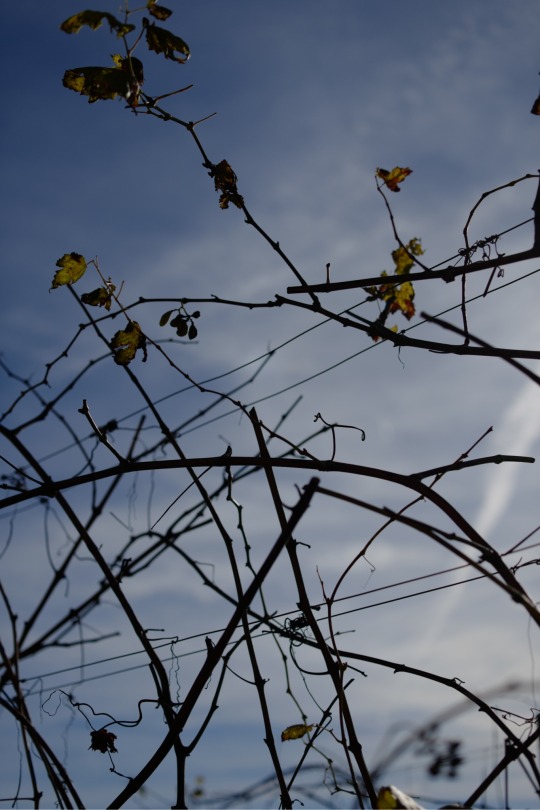



#farm#wine#biodynamicfarming#biodynamicwine#biologico#farming#biodinamica#cinqueterre#grapes#organic#stelladilemmen#byodinamic#biodynamic#aziendaagricolabiologica#farmer#italy#new year#2023
1 note
·
View note
Photo


There are three ways
There are three ways to reach Stella di Lemmen, always and exclusively on foot: ascending from the path that starts from the coastal road, descending from the Telegrafo or, in the opposite direction, taking the path that leads from the Sanctuary of the Madonna di Montenero to the Telegrafo (and then on to Portovenere).
The latter option, which intersects the farm about halfway through, on a flat section of the path, is certainly the most striking.
The view from the plateau of the Sanctuary, at the start, is breathtaking: the sea with a wide stretch of coastline both east and west seems to loom up to embrace us, while the shade of the pines around the building provides friendly shelter.
Continuing along the trail, after a sharp right turn slightly uphill, the path becomes flat again and shortly afterwards we can see below the "Costa de Sera" with its fields sloping down to the sea.
Once we reach the beautiful vineyard of "Travandasca," tended by its owners Mario and Luciano, the view of Stella di Lemmen opens up in the distance, and from there on appears and disappears multiple times, interrupted by heather, patches of broom or tall trees such as turkey oaks and chestnuts.
As we approach the farm step by step, the view overlooks the terraces, vineyards, vegetable gardens, and trees, and a feeling of peace and harmony, of great tranquility presents itself to our hearts.
When finally the whole view opens to Stella di Lemmen, it is impossible not to feel a vague astonishment, like when the magician pulls the white rabbit out of the hat: "but...what's going on?!"
The farm, still a work in progress, is the largest in the Cinque Terre in terms of cohesive land area, and is the only biodynamic agricultural organism in the region.
It is now eight years that we have been taking care of this place and that this place has been taking care of us, a challenging and increasingly intense "dialogue" that goes on day after day. A continuous confrontation with the earth, with plants and animals, with weather events, the sky, the moon...and the stars.
As far as we can, we try more than anything else to "listen," because in our opinion it is the right key, the only plausible one to act in harmony with nature and to be able to keep the spirit of the place unchanged - or more, well alive.
The Cinque Terre are in their entirety a magical place, vibrant with energy and uniquely beautiful. Set in this context, Stella di Lemmen can really shine, enriched by the potential of the virtuous circle that is triggered when we humans respect what is beautiful, precious and true around us.
Ci sono tre modi
Ci sono tre modi per raggiungere Stella di Lemmen, sempre e solamente a piedi: salendo dal sentiero che parte dalla strada litoranea, scendendo dal sentiero del Telegrafo oppure, in direzione opposta, imboccando il sentiero che dal Santuario della Madonna di Montenero porta al Telegrafo (e prosegue poi per Portovenere).
Quest’ultima opzione, che interseca circa a mezza altezza l’azienda con un tratto di cammino pianeggiante, è certamente la più suggestiva.
Il panorama dal pianoro del Santuario, alla partenza, è mozzafiato: il mare con un ampio tratto di costa sia a est che a ovest sembra incombere fino a volerci abbracciare, mentre l’ombra dei pini intorno alla costruzione fornisce un’amichevole riparo.
Continuando il percorso, dopo una decisa svolta a destra in leggera salita, il sentiero torna pianeggiante e poco dopo si può ammirare in basso la “Costa de Sera” con i suoi campi che scendono fino al mare.
Una volta raggiunto il bel vigneto di “Travandasca”, curato dai suoi proprietari Mario e Luciano, ecco aprirsi in lontananza la visuale su Stella di Lemmen che da lì in poi appare e scompare interrotta a tratti dalle eriche, da macchie di ginestre, o da piante ad alto fusto come cerri e castagni.
Mentre ci avviciniamo, passo dopo passo, la vista si affaccia sui terrazzamenti, sui vigneti, gli orti, i giardini e gli alberi, ed una sensazione di pace e armonia, di grande tranquillità si presenta al nostro cuore.
Quando infine l’intera visuale si apre su Stella di Lemmen, è impossibile non provare un vago stupore, come quando il prestigiatore tira fuori il coniglio bianco dal cappello: “Ma...che cosa succede?!”
L’azienda, ancora in divenire, è la più grande delle Cinque Terre per estensione di terreni accorpati e rappresenta l'unico organismo agricolo biodinamico della zona.
Sono ormai otto anni che ci prendiamo cura di questo luogo e che questo luogo si prende cura di noi, un “dialogo” impegnativo e sempre più intenso che va avanti giorno dopo giorno. Un confronto continuo con la terra, con le piante e con gli animali, con gli eventi atmosferici, il cielo, la luna...e le stelle.
Per quanto ci è possibile cerchiamo più che altro di “ascoltare”, perché questa secondo noi è la chiave giusta, l’unica plausibile per agire in armonia con la natura e poter mantenere inalterato – o di più, ben vivo – lo spirito del posto.
Le Cinque Terre sono nella loro interezza un luogo magico e vibrante di energia, di una bellezza unica al mondo. Stella di Lemmen splende incastonata in questo contesto, arricchita dal potenziale del circolo virtuoso che si innesca quando noi umani rispettiamo quanto c’è di bello, di prezioso e di vero intorno a noi.
#stelladilemmen#cinqueterre#Italy#trekking#camminando#cammino#aziendaagricolabiologica#aziendaagricolabiodinamica#biodinamica#biologico#agricolturabio#biodynamic#biodynamicwine#biodynamicfarming#organic#organicfarm#farm
1 note
·
View note
Text

An educational trip to Trentino Südtirol
This weekend, Kostantin and I participated in a course by Cambium Formazione on the introduction of animals to farms and how they should be cared for.
After passing through the "gates" of Trentino, represented by the austere fortresses that are imposed on the view of the traveler coming from the south along the Adige Valley, we arrived in Mezzolombardo, almost at the border with South Tyrol. There lies the Foradori Winery, which kindly hosted the first part of the internship conducted by Adriano Zago, an enologist and agronomist who collaborates with Stella di Lemmen and many other organic and biodynamic wineries. With him, in the role of main teacher, the veterinarian Marcello Volanti from Verona.
Foradori, with its wineries, vegetable gardens and part of the vineyards, is set in the heart of the village. Once crossed the portal of the estate, it is possible to perceive a flow of order and harmony emanated by the deep synergy between man and nature.
Elisabetta Foradori is responsible for this enchantment: she was able to lead the winery, established in the beginning of the 1900's, towards economic success, but most of all - supported by the impulse of her husband Rainer Zierock - towards ontological success, which happens when human beings and nature communicate and go on together.
So now, to close the circle, several happy bovines graze in the vineyards of the Foradori winery and contribute to the success of its legendary wines, which reach sixty countries of the planet.
There could not have been a better location to listen to the heartfelt indications of our veterinary teacher, vigilant and prepared, who suggested us many important points to think about.
The next day, visits to the marvelous biodynamic farms of South Tyrol Manincor and Lageder allowed us to verify even more how animals can be limpidly integrated into the agricultural organism, enriching it with value and content.
Kostantin rightly noted how respect for the animal allows it to relate to man, in the fullness of its own ease, as a particular entity and not just as part of a group.
Personally, the topic that struck me the most among the many aspects discussed was the one concerning the death of the animal, a delicate issue often neglected or experienced with embarrassment, although it is a natural part of the cycle of breeding and therefore should be addressed with serenity.
Marcello Volanti pointed out that animals live in the present, they remember negative experiences but do not have a sense of death. Basically, if they live well, death does not represent a problem for them; this brought back to my mind the passage of the Apocalypse: "It is done! I am the Alpha and the Omega, the Beginning and the End. To the thirsty I will give freely from the spring of the water of life." (21:6).
Thanks to all of our hosts, I continue to meditate while gazing at the shining snowy peaks of Trentino in silence. Soon we will have to leave and return to the sea.
Un viaggio istruttivo in Trentino Alto Adige
Questo fine settimana io e Kostantin abbiamo partecipato al corso di Cambium Formazione sull’introduzione degli animali in azienda e su come andrebbero accuditi per il loro benessere.
Dopo aver varcato le "porte" del Trentino, rappresentate dalle austere rocche che si impongono alla vista del viaggiatore proveniente da sud percorrendo la valle dell'Adige, siamo arrivati a Mezzolombardo, quasi al confine con l’Alto Adige. Lì si trova l'Azienda Agricola Foradori, che ha gentilmente ospitato la prima parte dello stage condotto da Adriano Zago, enologo e agronomo che collabora con Stella di Lemmen e con molte altre aziende biologiche e biodinamiche. Con lui, nella veste di docente principale, il veterinario Marcello Volanti di Verona.
Foradori, con le sue cantine, gli orti e una parte dei vigneti è incastonata nel cuore del paese. Varcato il portale della tenuta si percepisce un flusso di ordine e armonia sprigionato dalla profonda sinergia tra umano e natura.
Di quest’incanto è responsabile Elisabetta Foradori, che ha saputo traghettare l’azienda, nata nel primi del Novecento, verso il successo economico, ma soprattutto - sostenuta dall’impulso del marito Rainer Zierock - il successo ontologico, che si verifica quando l’essere umano e l’essere della natura comunicano e procedono di concerto.
Così adesso, a chiusura del cerchio, alcuni felici bovini pascolano nei vigneti dell’Azienda Foradori, e contribuiscono alla riuscita dei suoi leggendari vini, che raggiungono sessanta paesi del pianeta.
Non poteva esserci migliore location per ascoltare le accorate indicazioni del nostro docente veterinario, vigile e preparato, che ci ha suggerito numerosi spunti importanti sui quali riflettere.
Il giorno successivo, le visite alle meravigliose Aziende Agricole biodinamiche dell’Alto Adige Manincor e Lageder hanno permesso di verificare ancor più come gli animali possano integrarsi limpidamente nell’organismo agricolo, arricchendolo di valore e di contenuti.
Kostantin ha giustamente notato come il rispetto per l’animale consente a quest’ultimo di rapportarsi con l’uomo, nel pieno del suo proprio agio, come entità particolare e non solo come parte di un gruppo.
Personalmente, l’argomento che più mi ha colpito tra i numerosi aspetti trattati è stato quello che riguarda la morte dell'animale, tema delicato ma spesso trascurato o vissuto con imbarazzo, pur facendo naturalmente parte del ciclo dell'allevamento e dovendo quindi venire affrontato con serenità.
Marcello Volanti ha sottolineato che gli animali vivono nel presente, ricordano l’esperienza negativa ma non hanno un’immagine della morte. In sostanza, se vivono bene la morte non costituisce un problema per loro; questo mi ha riportato alla memoria la frase dell’Apocalisse: "Ogni cosa è compiuta! Io sono l'Alfa e l'Omega, il principio e la fine; a chi ha sete Io darò in dono della fonte dell'acqua della vita." (21:6).
Grazie a tutti i nostri ospiti, continuo a meditare osservando le splendenti cime innevate del Trentino in silenzio. Presto dovremo partire per fare ritorno al mare.



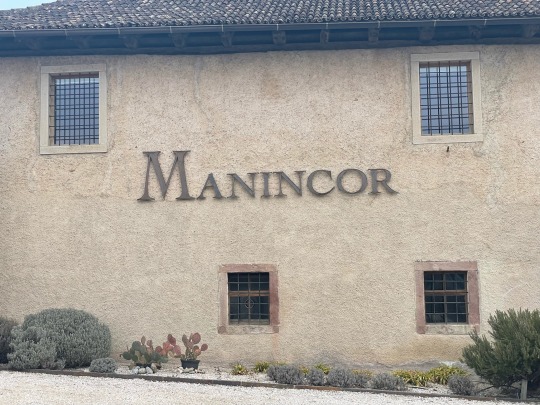





#farm#wine#farming#biodynamicfarming#biodynamicwine#biologico#grapes#biodinamica#byodinamic#farmer#stelladilemmen#organic#cambium#cambiumformazione#formazione#foradori#Manincor#Lageder
1 note
·
View note
Text

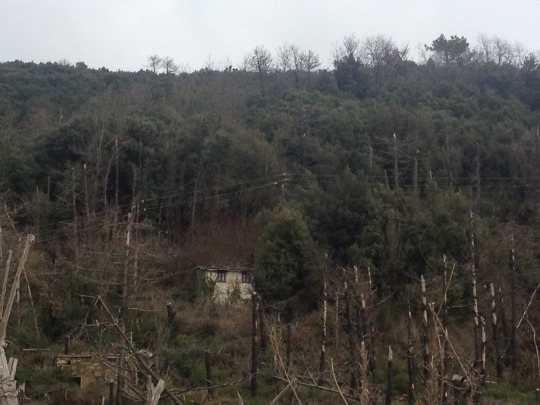


The eighth year
This year we are celebrating eight years of Stella di Lemmen. Seven years ago, we began to clear the terraces of brambles and dead, burnt trees.
Then, as now, our aim was to revive the small village of Limen, a corner of the Cinque Terre that had been abandoned for several decades.
If we look back at the work done, it reminds us that six thousand - 6,000!!- square metres of dry stone walls were rebuilt to support the strips of land to be cultivated and to prevent the mountain from collapsing.
The terraces were mainly dedicated to vineyards, but also contain woodland, small olive groves, fruit trees and thousands of shrubs, medicinal, aromatic and ornamental plants belonging to the Mediterranean maquis, with particular emphasis on so-called melliferous species, loved by bees and pollinating insects.
The aim is to ensure the biodiversity and the ecological balance of this microcosm.
Finally, to complete and formalise our commitment, from 2019 we are certified Organic by “Suolo e Salute”, an italian certification body for organic agri-food and enviroment sectors.
And what will happen in the future in this eighth year?
Stella di Lemmen is now taking its first steps to "present itself to the world": fundamental is the 2020 vintage wine, the result of the third year of harvesting in the very young vineyard. It is now almost ready to be tasted, and, although it is only a starting point, we find that it faithfully describes the care and attention spent on the vineyard and the respect we show for the soil in which the vines are planted.
There are still some walls to be finished, the vineyard in the lower parts to be planted, other crops and garden areas to be laid out, and countless details to be sorted out.
As of today, we can finally observe - with gratitude and a touch of pride - how the vision we had in mind from the beginning is taking shape and becoming more and more evident, testifying to great efforts but even more to great satisfaction.
L’ottavo anno
Con il passaggio al 2022 abbiamo innaugurato l’ottavo anno di Stella di Lemmen. Sette anni fa, di questi tempi, iniziavamo a ripulire quel che rimaneva dei terrazzamenti da roveti e innumerevoli tronchi di alberi morti - in prevalenza pini, ma anche lecci e querce - ai quali l’incendio del 2011 aveva bruciato le chiome.
Allora, come adesso, il nostro intento era di riportare in vita questo angolo delle Cinque Terre, il villaggio di Limen, strappandolo all’abbandono durato diverse decadi.
Lo sguardo indietro, al lavoro svolto, ci ricorda che sono stati ricostruiti seimila - 6.000! - metri quadri di muri a secco, atti a sostenere le fasce di terreno da coltivare e ad impedire alla montagna di franare.
I terrazzamenti sono stati dedicati prevalentemente al vigneto, ma ospitano anche bosco, piccoli oliveti, alberi da frutta e migliaia tra arbusti, piante officinali e aromatiche nonché piante ornamentali appartenenti alla macchia mediterranea, con particolare riguardo per le specie cosiddette mellifere, amate dalle api e dagli insetti impollinatori. Il tutto volto a garantire la biodiversità e l’equilibrio ecologico di questo microcosmo.
Infine, per completare e formalizzare il nostro impegno, dal 2019 siamo certificati Biologici attraverso Suolo e Salute, ente certificatore di Varese Ligure.
E lo sguardo rivolto al futuro, in questo ottavo anno?
L’azienda agricola sta muovendo ora i primi passi per “presentarsi al mondo”: fondamentale tra essi è il vino della vendemmia 2020, il risultato del terzo anno di raccolto nel giovanissimo vigneto. È ormai quasi pronto ad essere degustato, ed anche se rappresenta solamente un punto di partenza, troviamo che descriva fedelmente le cure e le attenzioni prodigate al vigneto ed il rispetto che portiamo per il suolo che ospita gli impianti. 
Rimangono inoltre da finire alcuni muri, da impiantare il vigneto nelle fasce basse, da impostare altre coltivazioni e aree giardino, da sistemare innumerevoli dettagli.
Ad oggi, possiamo finalmente osservare - con gratitudine ed una punta di orgoglio - come sempre più prende forma e si rende manifesto il disegno che avevamo in mente fin dall'inizio, a testimoniare grandi fatiche ma ancor più grandi soddisfazioni.


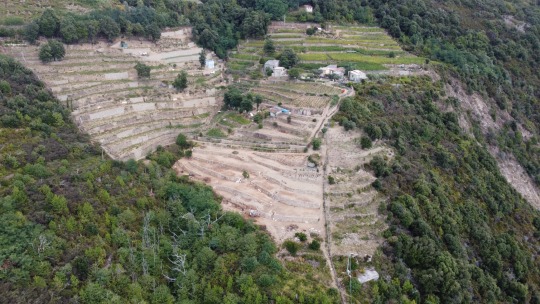

#farm#wine#farming#biodynamicfarming#cinqueterre#biodynamicwine#biodynamic#biodinamica#biologico#organic#organicwine#organicfarm#landscape#stelladilemmen
1 note
·
View note
Video
Plants, plants everywhere! 😜🌱#stelladilemmen
#wine#uva#riomaggiore#vineyard#sky#vino#italy#flowers#grapes#agricultural#cinqueterre#farm#lemmen#biologico#byodinamic#stelladilemmen#organic#see#grapevine#italianstyle#vigna#nature#plant#viti#farmlife#liguria
1 note
·
View note
Photo
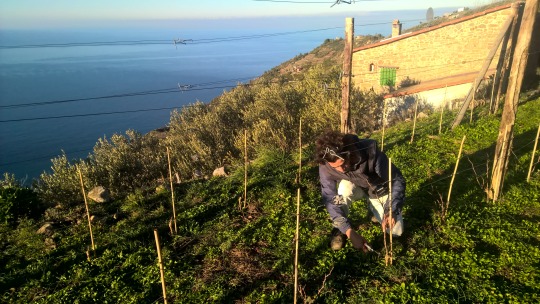
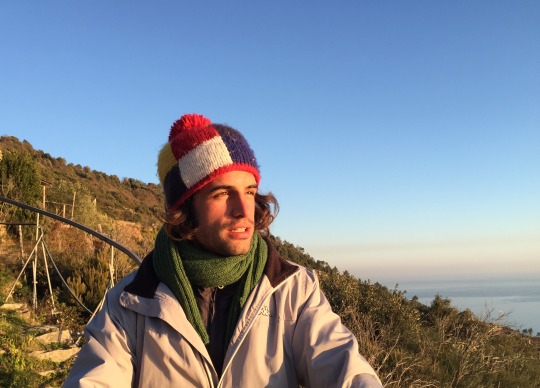
Introductions: I am Francesco
Delighted to meet you! My name is Francesco, I am 25 and I received my degree in 2013 in Medical Radiology Techniques. So, what you might ask am I doing on the land. Quite simply, following my star! After High School, I chose my university faculty with my mind not with my heart. I had been conditioned, as had been many of my fellow students, by the uncertainty of finding jobs. I thought my studies would provide me with stable, lasting work. Unfortunately, it was not to be and with my degree in hand I found no job and no incentives.
So, wanting to be independent, I accepted a job at the Wine Co-operative of Cinque Terre and almost for fun, found myself working in a wine cellar, far from what I had studied, but much closer to what I had always been attracted to: nature and ecology!
My next step was much less difficult: the Stella di Lemmen project fascinated me from the start and when I saw the place I was totally captivated up there at 400 metres with the sea and the sun in front of me.
Some say I have become a recluse up in the peaks, but despite the hard work, the land is becoming an exciting choice and thanks to the pain and joys of working it, my spirit soars in feelings of freedom.
So here I am: it will be me who communicates with you, who shares with you our progress, our success or otherwise and our dreams. In short I will be keeping the log book of Stella di Lemmen.
If you have any questions or suggestions, please write to us at: [email protected]
I will try and reply as soon as possible, vines permitting! They, of course, take precedence!
All the best and may your Star be with you!
Mi presento: sono Francesco
Piacere di conoscervi! Mi chiamo Francesco, ho 25 anni e mi sono laureato nel 2013 in Tecniche di Radiologia Medica.
Forse vi chiedete che cosa ci faccia in campagna? Semplice: ho seguito la mia Stella!
Dopo il Liceo Scientifico ho scelto la facoltà universitaria cercando di ragionare, piuttosto che affidarmi al cuore. Condizionato, come tanti miei coetanei, dal clima di incertezza per la futura occupazione, ho seguito un percorso di studi che potesse offrirmi l’opportunità di un impiego stabile e continuativo. Purtroppo così non è stato e, una volta laureato, mi sono ritrovato privo di lavoro ed anche di stimoli! …
Così, pur di rendermi indipendente, ho accettato un impiego alla Cantina Sociale delle Cinque Terre, ritrovandomi - quasi per gioco - a fare il cantiniere, lontano dall’ambito dei miei studi ma più vicino a tematiche che da sempre sentivo mie: la natura e l’enologia.
Il passo successivo è stato molto meno difficile: il progetto di Stella di Lemmen mi ha affascinato ed entusiasmato da subito, e quando mi sono recato a vedere il posto sono rimasto definitivamente intrappolato lassù, a 400 metri d’altitudine, col mare davanti al petto e il sole sulla fronte.
Qualcuno dice che mi sono recluso là in cima. Per me invece, nonostante la fatica, la campagna si è rivelata una scelta appassionante e, attraverso le gioie e i dolori che la terra così bassa e la viticoltura così impegnativa elargiscono, sento il mio spirito innalzarsi ed elevarsi verso la libertà.
Quindi, eccomi qua: sarò io a comunicare con voi, a farvi partecipi dei nostri progressi, dei nostri successi o meno, dei nostri sogni. In sostanza a tenere il “giornale di bordo” di Stella di Lemmen.
Se avete domande, richieste o suggerimenti non esitate ad inviare una mail a: [email protected]. Cercherò di rispondervi al più presto, magari dovrete avere un po’ di pazienza…la vigna ha sempre la precedenza!
A presto e che la Vostra Stella sia con voi.
1 note
·
View note
Photo
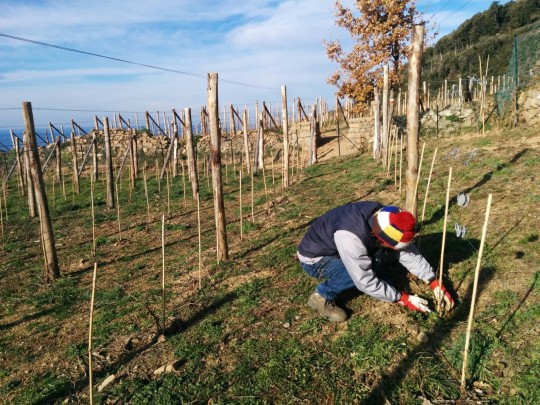

Time to Prune
Our young vines have been pruned for the first time. It took courage to prune back the shoots that had grown so vigorously last spring and see them reduced to how they were when they were first planted!
In order for the vines to develop strong roots and stems, two buds are left on, according to Guyot pruning techniques. However, each plant is a case unto itself and to preserve its equilibrium it has to be considered individually. Those which have developed excessively are allowed their zeal and three buds can be left; the weaker ones must be helped to grow more vigorously and only one bud is left.
Mission achieved! Now all we have to do, is wait for the spring.
Tempo di potatura
Abbiamo potato le nostre giovani viti per la prima volta. C'è voluto del gran coraggio per privarle dei due tralci cresciuti vigorosamente la primavera scorsa e riportarle all'altezza di quando erano state piantate!
Per far sì che la vite sviluppi l'apparato radicale e irrobustisca il tronco di solito vengono lasciate due gemme, secondo la tecnica di potatura Guyot. Ogni pianta però è un caso particolare e, al fine di preservare il suo equilibrio, deve essere considerato singolarmente: quelle troppo sviluppate vanno lasciate “sfogare”, concedendo loro una terza gemma; quelle più deboli invece vanno fatte rinvigorire, lasciando loro una sola gemma.
Missione compiuta! Ora non resta che attendere la primavera.
0 notes
Photo
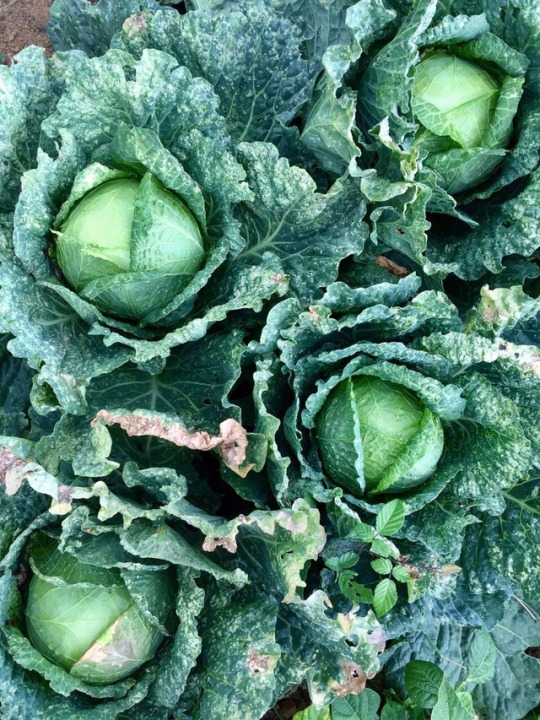
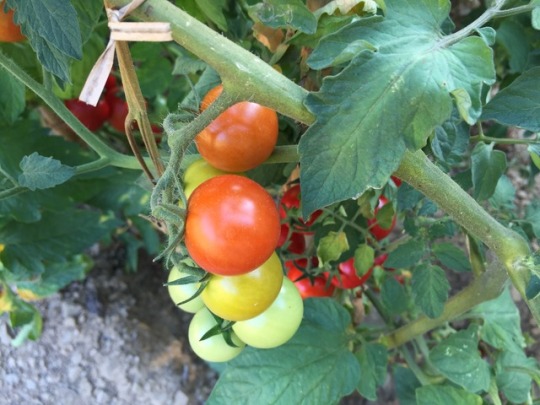
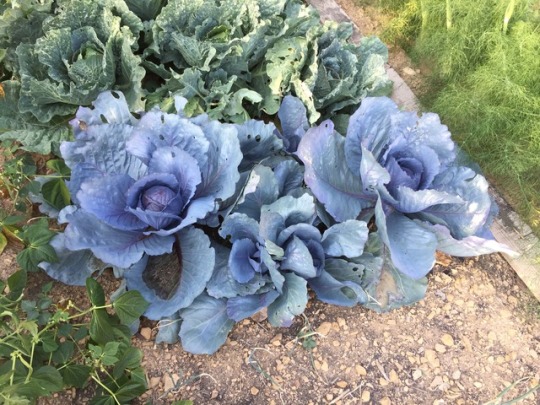

The Vegetable Garden
Without a permanent home here at Stella di Lemmen, the vegetable garden, this year has been allocated as an experiment, to test the land and to see how the vegetables react to the climate and atmosphere.
Considering our struggle – from the very beginning of May – to combat the drought and provide sufficient humidity for the survival of the plants, we are more than satisfied with our initial attempt. The plants have been extremely generous and we have been provided with an unexpected quantity of delicious vegetables.
Once the brambles and weeds had been dug up, we worked the earth without going too deep, removed a large amount of stones and added a small amount of organic worm humus. And nothing else! No fertilizers and certainly no pesticides. It was the rich soil having lain fallow for more than thirty years that provided everything for a surprisingly healthy cycle of growth and fruitification of the plants.
And that is nature: an admirable balance, precision, abundance and synergy of subtle elements and cosmic energies. For all living beings, for us humans as well as for plants, the key word is “to prosper”. We human beings are the only organisms of creation to succeed in subverting the natural order of things to our ‘benefit’ without noticing the damage we inflict, above all on ourselves.
We learnt a great deal from the vegetable garden this year! First of all, that it is indispensable to have a good base soil in order to obtain good results. That it is necessary to give in order to have: substantial mulching (a thick, organic layer of dry leaves, straw or similar at the base of the plants), for example, which gives back to the soil some of the nutritional elements used by the vegetable plants and which helps maintain the humidity of the soil so essential in places exposed to the sun and droughts such as ours. And then, once again, the wonder, respect and gratitude for what life so generously bestows on us.
We will try to do better next year, thanks to new indications. For the time being we will enjoy our delicious vegetables grown in full respect of the soil: zucchini that taste like butter, sweet sun-drenched tomatoes full of vital energy, egg plants of a thousand shades of taste, succulent delicate cucumbers, tender, tasty runner beans and many other sublimely tasty greens!
More pictures on instagram.com/stelladilemmen
L’orto
Non avendo ancora una dimora in grado di ospitarci in modo permanente qui a Stella di Lemmen, l'orto, quest'anno, è stato allestito soprattutto per fare un esperimento: testare il terreno e vedere come reagiscono i vari ortaggi al clima e all'atmosfera.
Considerata la lotta – sin dai primi di maggio! – per fronteggiare la siccità ed assicurare l'umidità necessaria alla sopravvivenza dei vegetali, siamo più che soddisfatti di questo primo tentativo. Le piante sono state estremamente generose e ci hanno fornito quantità inaspettate di prelibata verdura.
Una volta estirpati rovi ed infestanti, abbiamo lavorato il terreno senza andare troppo in profondità, abbiamo tolto un gran numero di pietre ed abbiamo incorporato un piccolo quantitativo di humus di lombrico biologico. E null'altro! Niente concimi e tanto meno antiparassitari. È stata la vitalità della terra, intoccata da più di trent'anni, a pensare a tutto e ad alimentare un ciclo vitale sorprendente, che ha fatto crescere e fruttificare le piante, permettendo la riproduzione e la sopravvivenza della specie.
Così opera la natura: in mirabile equilibrio, con giustezza, abbondanza e sinergia di elementi sottili ed energie cosmiche. Per tutti gli esseri viventi, per noi come per le piante, la parola d'ordine è "prosperare". Noi umani siamo gli unici organismi del creato ad arrivare a sovvertire l'ordine naturale per raggiungere il nostro profitto, senza badare ai danni che infliggiamo, soprattutto a noi stessi, con le nostre azioni.
Abbiamo imparato tanto dall'orto quest'anno! Prima di tutto che è indispensabile avere una buona base per ottenere buoni risultati. Poi che è necessario dare per avere: una consistente pacciamatura (uno strato di foglie secche, paglia o altro materiale organico posto ai piedi delle piante), ad esempio, avrebbe restituito al suolo parte degli elementi nutritivi da lui ceduti per la crescita delle verdure e in più avrebbe aiutato a preservare l'umidità del terreno, preziosa in luoghi estremamente assolati e siccitosi come il nostro. Infine, ancora una volta la meraviglia, il rispetto e la gratitudine per ciò che la vita elargisce.
Cercheremo di fare meglio l'anno prossimo, grazie a tutte queste nuove indicazioni. Intanto ci godiamo la squisitezza dei nostri ortaggi, cresciuti rispettando la terra: le zucchine che sanno di burro, i dolci pomodori saturi di sole e di energia vitale, le melanzane dalle mille sfumature di sapore, i cetrioli succosi e delicati, i fagiolini teneri e saporiti e tanti altri ortaggi ed aromi sublimi!
Potete ammirare i risultati su instagram.com/stelladilemmen
0 notes